Achieving darts bullseye 3 in a row consistently takes dedicated practice and mastering specific techniques. This article provides a comprehensive guide to improving your accuracy and consistency, covering everything from stance and grip to mental focus and targeted practice routines.
⚠️ Still Using Pen & Paper (or a Chalkboard)?! ⚠️
Step into the future! The Dart Counter App handles all the scoring, suggests checkouts, and tracks your stats automatically. It's easier than you think!
Try the Smart Dart Counter App FREE!Ready for an upgrade? Click above!
The Allure of Darts Bullseye 3 in a Row
There’s a unique satisfaction in hitting the bullseye in darts. It’s the center of the target, the highest scoring area, and a symbol of precision. Stringing together darts bullseye 3 in a row? That’s a display of skill and control that any darts player would be proud of. But it’s more than just bragging rights; consistent bullseye hits can significantly improve your overall scoring and competitiveness, especially when following the darts set format.
Many players focus on hitting high scores in general, aiming for the treble 20. While that’s a valid strategy, developing bullseye accuracy offers distinct advantages. It provides a reliable fallback when the treble 20 feels out of reach, and it can be a game-changer in crucial moments where you need to close out a leg quickly. Furthermore, the mental discipline required to achieve darts bullseye 3 in a row translates positively to other aspects of your game. Understanding the darts points system can also aid in strategically aiming for the bullseye.
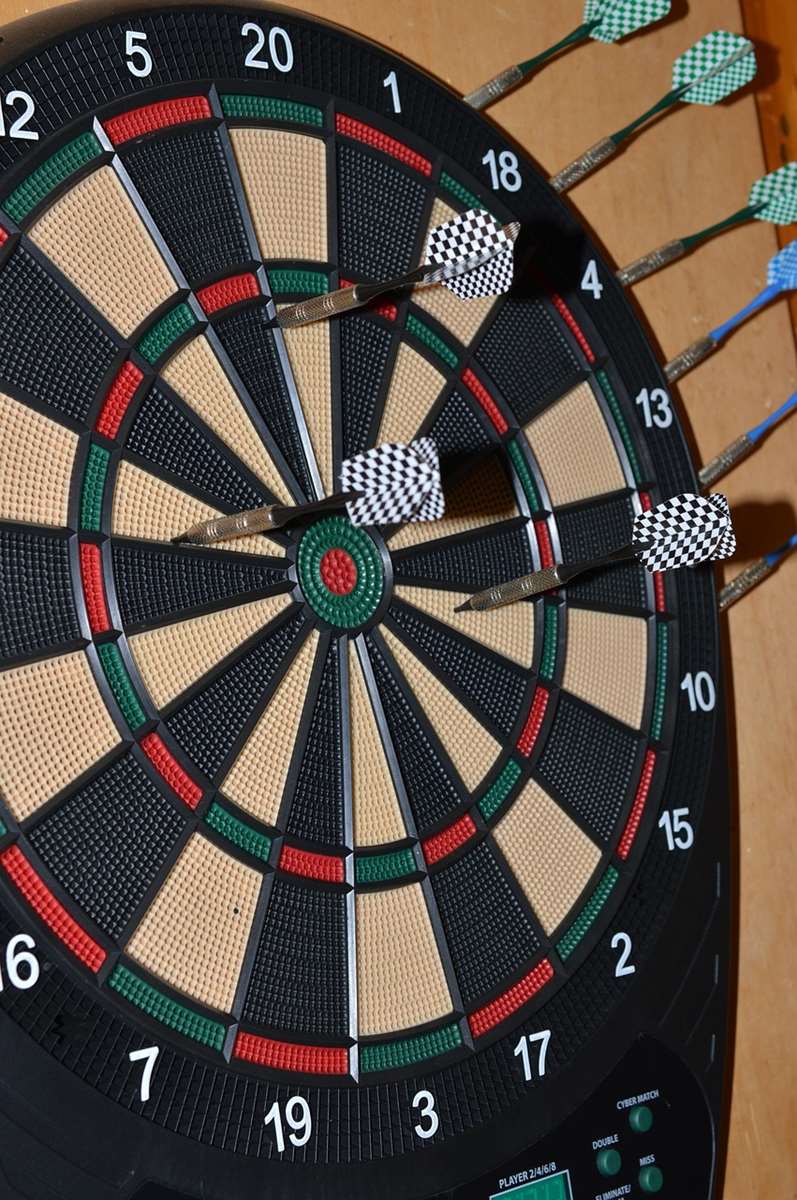
Mastering the Fundamentals: Your Foundation for Bullseye Accuracy
Before you can consistently hit the bullseye, you need a solid foundation in the fundamentals of darts. This includes your stance, grip, and throw. These three elements work together to create a smooth, repeatable motion that will deliver the dart accurately.
Stance: Finding Your Balance
Your stance is your base of support. A stable and balanced stance is crucial for maintaining consistency. Experiment with different stances to find what feels most natural and comfortable for you. Here are some common stances:
- Parallel Stance: Both feet are parallel to the oche (the throwing line). This provides a wide base and good stability.
- Angled Stance: One foot is slightly ahead of the other, angled towards the board. This allows for a more natural throwing motion.
- Closed Stance: The front foot is pointed more directly at the board, with the back foot providing support.
Regardless of the stance you choose, make sure your weight is evenly distributed and your body is relaxed. Avoid leaning too far forward or backward, as this can throw off your balance and accuracy. Proper foot placement is key. Also, remember the rules in case of darts championship last year participation.
Grip: Finding What Works Best
Your grip is how you hold the dart. It’s a personal preference, but there are some general principles to keep in mind. The most important thing is to find a grip that feels comfortable and allows you to control the dart without too much effort. Avoid gripping the dart too tightly, as this can cause tension and reduce accuracy.
Experiment with different grips to find what works best for you. Some common grips include:
- Two-Finger Grip: The dart is held between the thumb and index finger.
- Three-Finger Grip: The dart is held between the thumb, index finger, and middle finger.
- Four-Finger Grip: The dart is held between the thumb and all three fingers.
The pressure you apply to the dart is also important. You should hold the dart firmly enough to control it, but not so tightly that you restrict your throwing motion. A good rule of thumb is to grip the dart with the same amount of pressure you would use to hold a pen.
Throw: Creating a Smooth and Repeatable Motion
Your throw is the culmination of your stance and grip. It’s the motion that propels the dart towards the target. The goal is to develop a smooth, repeatable throw that minimizes unnecessary movement. Here’s a breakdown of the key elements of a good throw:
- Take Aim: Focus on the bullseye. Visualize the trajectory of the dart.
- Bring the Dart Back: Draw the dart back in a smooth, controlled motion. Keep your elbow high and your wrist firm.
- Release the Dart: Release the dart at the peak of your backswing, extending your arm towards the target.
- Follow Through: Continue your arm motion towards the target after you release the dart. This helps to ensure a smooth and consistent throw.
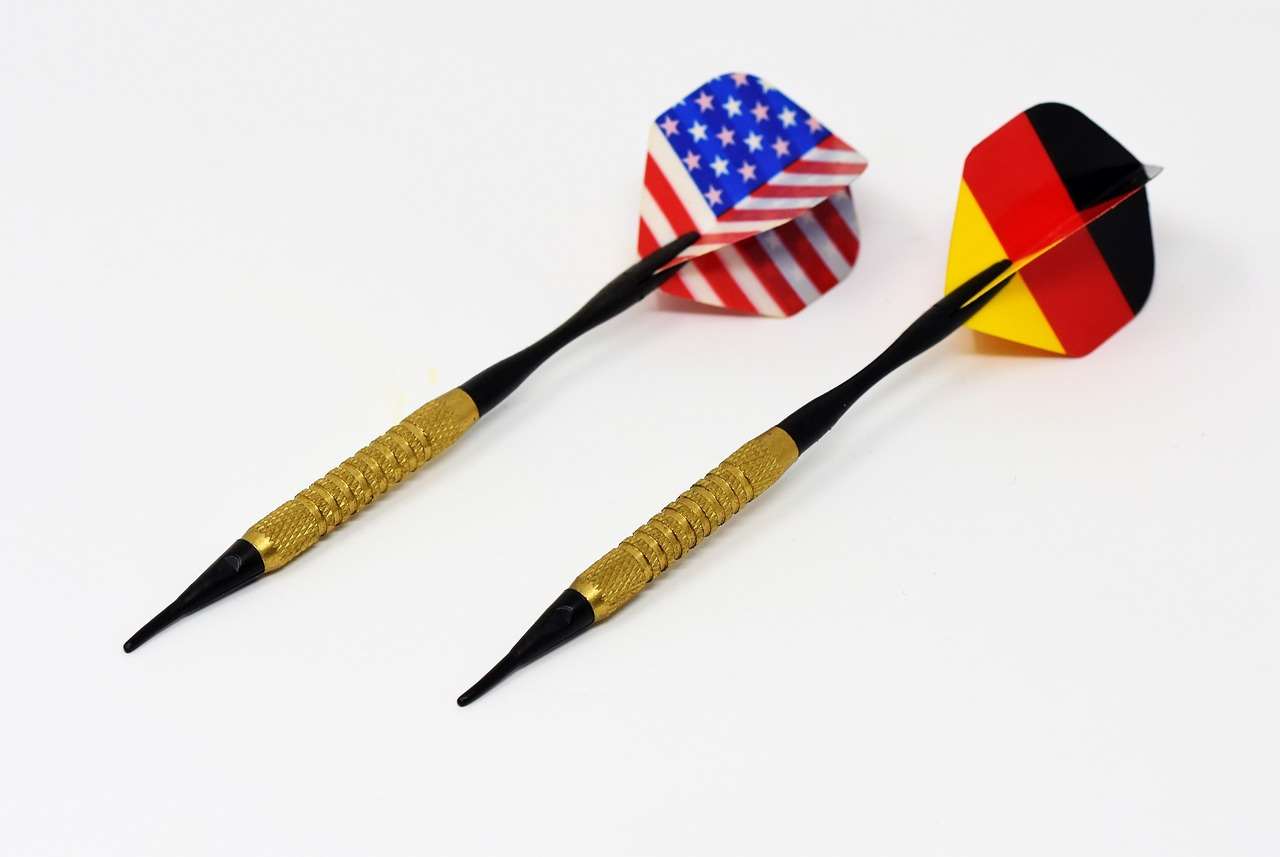
Targeted Practice Drills for Darts Bullseye 3 in a Row
Once you have a solid foundation in the fundamentals, it’s time to focus on targeted practice drills to improve your bullseye accuracy. These drills will help you develop muscle memory and fine-tune your throwing motion. Remember that the Darts scorekeeper app can be used for tracking your progress and stats during practice.
The Bullseye Challenge: Single Dart Practice
This is a simple but effective drill. Stand at the oche and throw single darts at the bullseye. Track how many darts you hit in a row. The goal is to gradually increase your streak of consecutive bullseyes. You can modify this drill by setting a time limit or increasing the distance to the board.
The Round the Clock Bullseye Drill
Start by aiming for the bullseye. If you hit it, move on to the 1 segment. Then the 2, then the 3, and so on, all the way around the board. If you miss the bullseye, you have to stay on the bullseye until you hit it before moving on. This drill helps to improve your accuracy on all parts of the board, but also forces you to focus on the bullseye when you miss.
The Double Bullseye Challenge
This drill focuses specifically on hitting two bullseyes in a row. Throw two darts at the bullseye. If you hit both, great! If you miss one or both, keep practicing until you hit two consecutive bullseyes. This drill is great for developing consistency and building confidence. The darts scoring voice will hopefully be cheering you on!
Mental Game: The Unsung Hero of Bullseye Accuracy
While physical skill is essential, the mental aspect of darts is just as important, especially when aiming for darts bullseye 3 in a row. Your mental state can significantly impact your accuracy and consistency. Here are some tips for developing a strong mental game:
Focus and Concentration
Maintain focus and concentration throughout your practice sessions and games. Avoid distractions and stay present in the moment. Before each throw, take a deep breath and visualize the dart hitting the bullseye. This can help to calm your nerves and improve your accuracy.
Positive Self-Talk
Replace negative thoughts with positive affirmations. Believe in your ability to hit the bullseye. If you miss, don’t dwell on it. Acknowledge the miss, learn from it, and move on. Focus on what you can control, such as your stance, grip, and throw.
Managing Pressure
Learn to manage pressure situations. Practice throwing under pressure by simulating game-like scenarios. This will help you to develop the mental toughness needed to perform your best when it matters most. Remember why darts blind 180 is not a viable strategy.
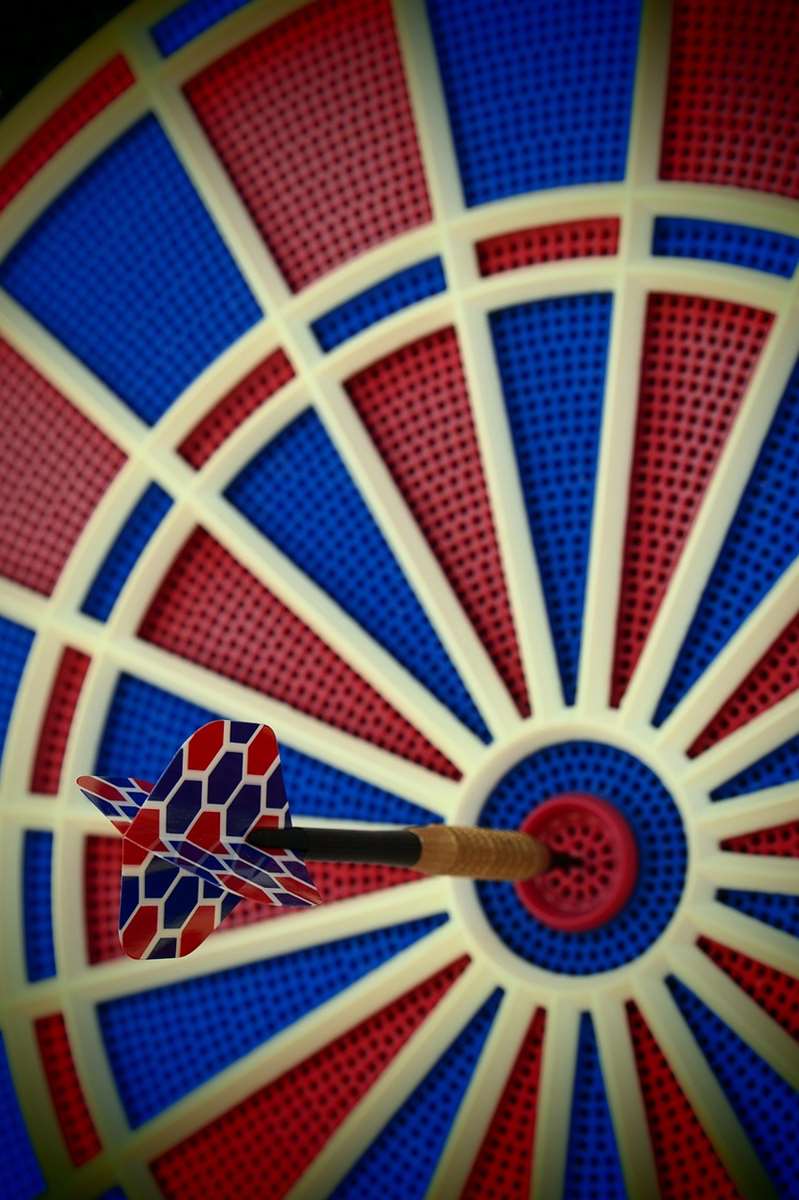
Advanced Techniques for Consistent Bullseye Hitting
Once you’ve mastered the fundamentals and developed a strong mental game, you can start to explore some advanced techniques to further improve your bullseye accuracy. These techniques can help you fine-tune your throwing motion and make subtle adjustments that can make a big difference.
Visual Alignment
Pay close attention to your visual alignment. Make sure your eye is aligned with the bullseye. This will help you to aim more accurately. Some players find it helpful to use a visual reference point on the board, such as a specific wire or segment, to help them align their shot.
Release Point Consistency
Strive for a consistent release point. The more consistent your release point, the more consistent your throws will be. Practice releasing the dart at the same point in your throwing motion every time. This requires a lot of focus and repetition, but it’s well worth the effort.
Fine-Tuning Your Grip
Experiment with subtle adjustments to your grip. Even small changes in your grip can have a significant impact on your accuracy. Try adjusting the pressure you apply to the dart or the position of your fingers. Pay attention to how these adjustments affect your throwing motion and the flight of the dart.
Equipment Considerations: Choosing the Right Darts
While skill and practice are the most important factors in achieving darts bullseye 3 in a row, your equipment can also play a role. Choosing the right darts can help you to improve your accuracy and consistency. Consider the following factors when selecting darts:
Weight
Darts come in a variety of weights, typically ranging from 16 to 30 grams. The best weight for you depends on your personal preference. Heavier darts tend to be more stable in the air, while lighter darts are easier to control. Experiment with different weights to find what feels most comfortable and accurate for you.
Barrel Material and Shape
Darts barrels are typically made of brass, nickel-silver, or tungsten. Tungsten darts are the most expensive but also the most durable and have the slimmest profile, allowing for tighter groupings. The shape of the barrel also affects the dart’s flight. Some common barrel shapes include:
- Straight Barrel: A straight barrel is uniform in diameter from end to end.
- Torpedo Barrel: A torpedo barrel is thicker in the middle and tapers towards the ends.
- Bomb Barrel: A bomb barrel is thickest at the back and tapers towards the front.
Flights and Shafts
Flights and shafts affect the dart’s aerodynamics. Flights provide stability and control, while shafts connect the flight to the barrel. Experiment with different shapes and sizes of flights and different lengths of shafts to find what works best for you. Shorter shafts are also very common with professional dart players flights.
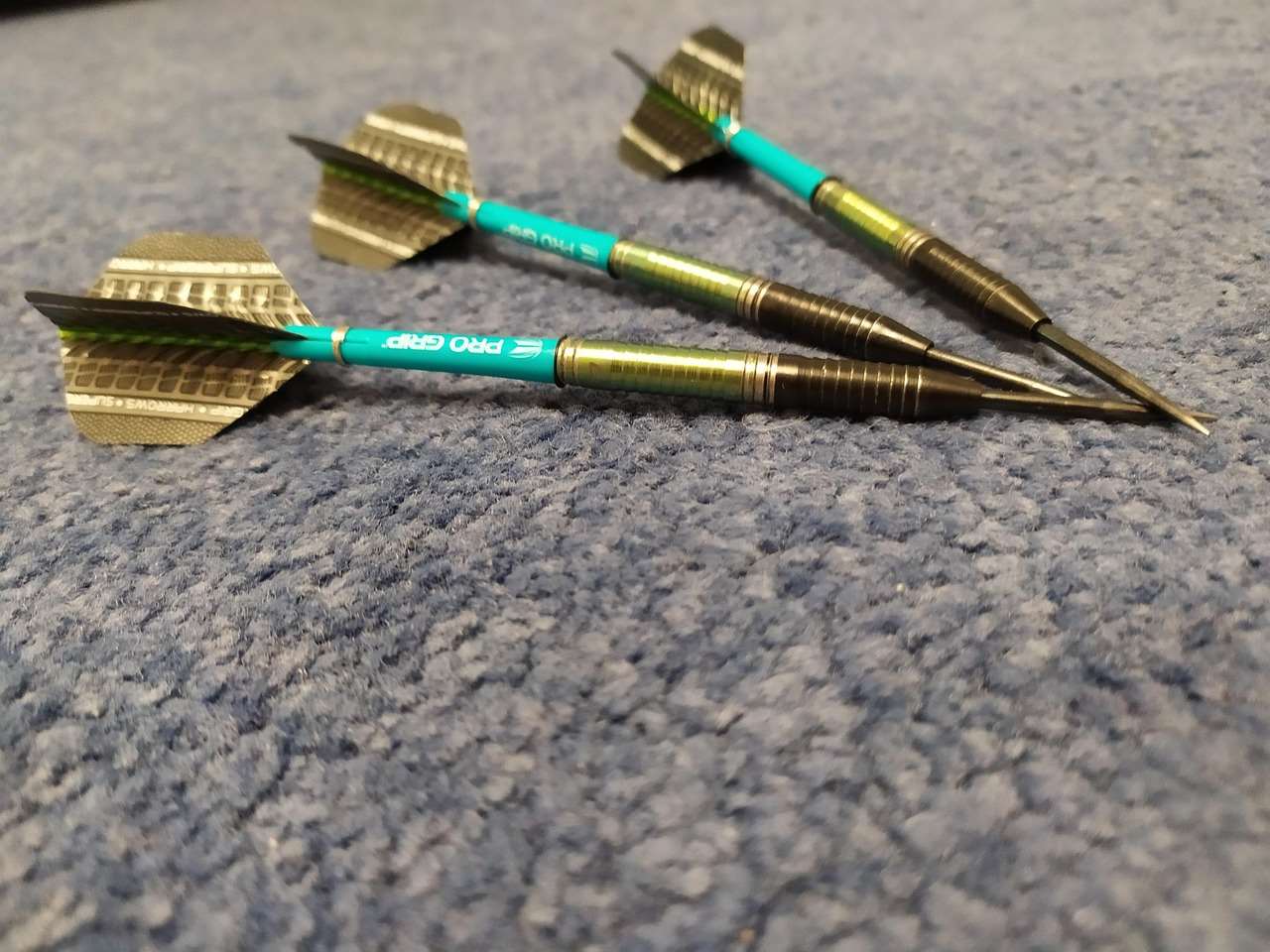
Common Mistakes to Avoid When Aiming for Darts Bullseye 3 in a Row
Even with proper technique and practice, you may still encounter challenges when trying to achieve darts bullseye 3 in a row. Recognizing and avoiding common mistakes can help you to improve your consistency.
Rushing Your Throw
One of the most common mistakes is rushing your throw. Take your time and focus on your technique. Avoid the temptation to throw too quickly, especially when you’re feeling pressured. Rushing your throw can lead to inconsistencies and reduced accuracy.
Tensing Up
Another common mistake is tensing up. Relax your muscles and avoid gripping the dart too tightly. Tension can restrict your throwing motion and reduce your accuracy. Focus on staying relaxed and fluid throughout your throw.
Not Following Through
Failing to follow through is another common mistake. Make sure you extend your arm fully towards the target after you release the dart. This helps to ensure a smooth and consistent throw. A good follow-through can add power and accuracy to your throws.
Ignoring Fatigue
Ignoring fatigue can significantly impact your performance. When you’re tired, your technique can suffer, and your accuracy can decrease. Take breaks when you need them and avoid practicing for too long at a time. Listen to your body and rest when necessary.
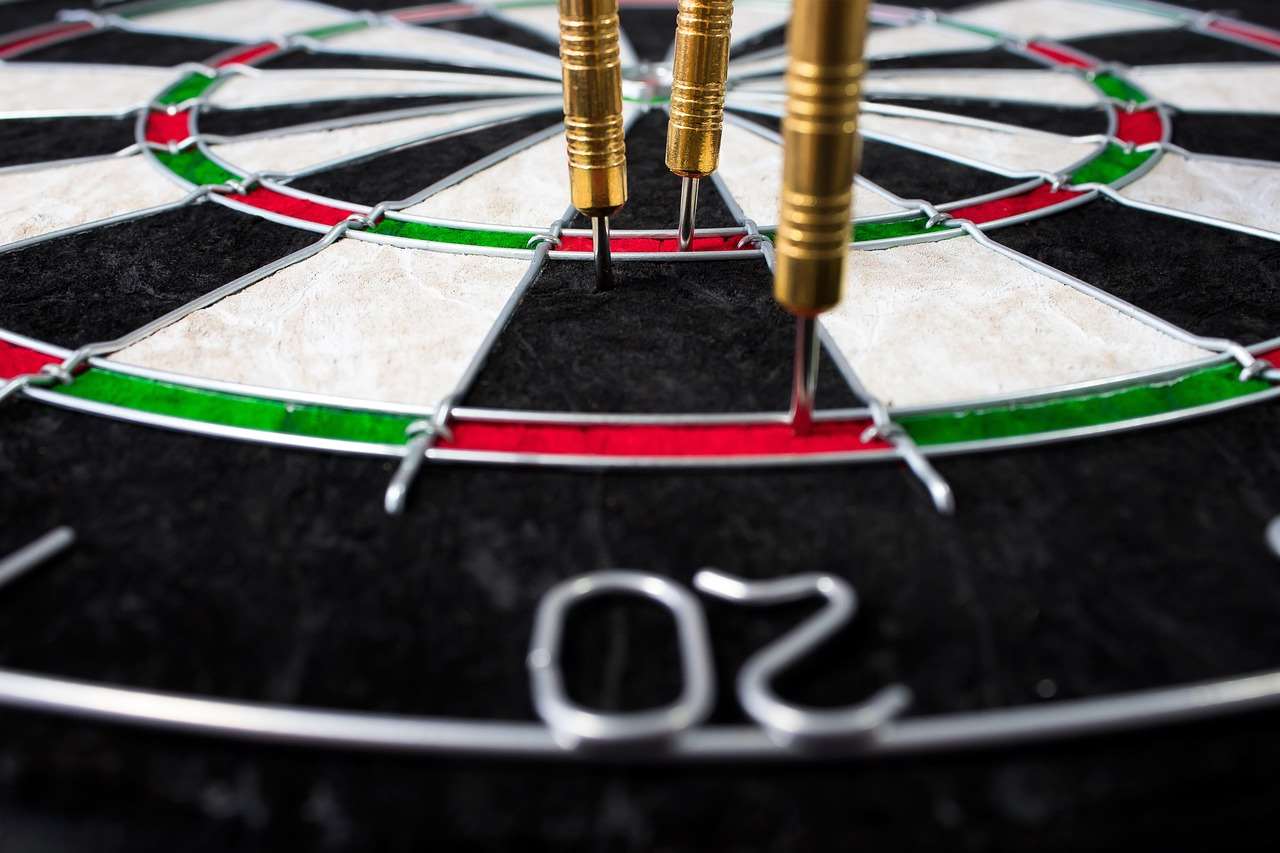
Troubleshooting Your Bullseye Accuracy
Even with dedicated practice, you might experience periods where your bullseye accuracy dips. Here’s how to troubleshoot and get back on track:
- Video Analysis: Record yourself throwing and analyze your technique. Look for any inconsistencies or areas where you can improve.
- Seek Feedback: Ask a more experienced darts player to watch you throw and provide feedback. A fresh pair of eyes can often spot things that you miss.
- Equipment Check: Examine your darts for any damage or wear and tear. Replace any worn-out parts, such as flights or shafts.
- Mental Reset: If you’re feeling frustrated, take a break and do something to relax and clear your head. Come back to practice with a fresh perspective.
Conclusion: Mastering the Art of Darts Bullseye 3 in a Row
Achieving darts bullseye 3 in a row is a challenging but rewarding goal. It requires a combination of solid fundamentals, targeted practice, a strong mental game, and attention to equipment. By following the tips and techniques outlined in this article, you can significantly improve your accuracy and consistency and take your darts game to the next level. Remember to stay patient, persistent, and focused on your goals. The journey to consistent bullseye hitting is a marathon, not a sprint. Consider trying out the dart counter app to track your progress. Now, grab your darts, step up to the oche, and start practicing! With dedication and the right approach, you’ll be hitting that triple bullseye in no time.
Hi, I’m Dieter, and I created Dartcounter (Dartcounterapp.com). My motivation wasn’t being a darts expert – quite the opposite! When I first started playing, I loved the game but found keeping accurate scores and tracking stats difficult and distracting.
I figured I couldn’t be the only one struggling with this. So, I decided to build a solution: an easy-to-use application that everyone, no matter their experience level, could use to manage scoring effortlessly.
My goal for Dartcounter was simple: let the app handle the numbers – the scoring, the averages, the stats, even checkout suggestions – so players could focus purely on their throw and enjoying the game. It began as a way to solve my own beginner’s problem, and I’m thrilled it has grown into a helpful tool for the wider darts community.